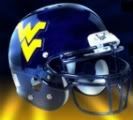Post by elp525 on May 19, 2011 5:07:46 GMT -5
Wednesday May 18, 2011
by Mike Casazza
\Charleston Daily Mail
\
MORGANTOWN, W.Va. - Dalton Pepper's decision to transfer Tuesday made him the ninth scholarship player to leave West Virginia's basketball program early since Bob Huggins became coach in April 2007.
Yet on the same day it was revealed Pepper was leaving - presumably for Temple - it was also learned the men's basketball team was again honored by the NCAA for having a multiyear Academic Progress Rate score in the top 10 percent of its sport.
How can a team lose so many players and do so well in the APR when the APR accounts for retaining and graduating student-athletes on scholarship as part of its snapshot of a program's academic success?
"A lot of people don't quite understand the numbers," said Dr. Paul Downey, WVU educational counselor and resident APR expert. "There are definitely some intricate rules for what is permissible and what does and does not affect a team."
In short, the exits for the purpose of a transfer or the pursuit of a pro career have not yet hurt the Mountaineers' APR. Adjustments made to the system over the years no longer overvalue the school's ability to graduate players it recruited, but put an emphasis on keeping players eligible and on track to graduation and for retaining players.
Last year, WVU received a score of 990 out of 1,000 for the four-year period of 2005-09. The score for the most recent evaluation of 2006-10 will be publicized Tuesday.
That four-year period includes six of the nine early departures: Devan Bawinkel in the summer of 2007, Jacob Green in 2008 (between fall and spring semesters), Joe Alexander and Will Thomas after the 2007-08 season, Dee Proby after the 2008-09 season and Devin Ebanks after the 2009-10 season.
This past fall, freshmen Darrious Curry and Noah Cottrill left after the fall semester and Pepper waited until the end of the spring semester.
Under the APR rules, though, only Curry and Cottrill will adversely affect WVU's score.
Basketball players can earn two points per semester and four points per year for a program's APR - a point each semester for being eligible and returning to the team.
While the NCAA keeps a lid on grades and eligibility, every one of those nine players finished their final semester. A transfer is not retained by the team, which would cost the team that point, but the NCAA allows a "discount" or an "adjustment" for transfers.
Schools are eligible if the player left the team with a GPA at or above 2.6 and immediately enrolls in another school.
"Every semester there are the two points for eligibility and retention," Downey said. "Someone could leave with a 3.0 and we might miss a point even though he's a good student. It would be 3 out of 4. He could have finished the fall semester and left at the end of the spring semester. The eligibility point was earned, but we don't earn the retention point. With the adjustment, instead of a 3 out of 4, we'd receive a 3 out of 3."
A basketball team can receive a maximum of 52 points in one academic year (13 scholarship players and four possible APR points per player). However, a team's APR is a percentage of what players could earn while on campus and isn't always on the 52-point scale.
"You're working on a percentage," Downey said. "If it's 50 out of 50 instead of 52 out of 52, that's still what you want. You want a high percentage because the bottom line is 925. That's where you put yourself at risk for scholarship and practice penalties. You want to stay above that 925 threshold."
The only other qualification for the transfer adjustment is that a player has to be in school for a year. Curry and Cottrill were not and Downey said WVU will lose points in next year's APR score because of that, although WVU could seek some sort of an exception for Curry, who was medically disqualified by a heart condition and left to play elsewhere.
Neither Alexander nor Ebanks graduated before entering the NBA Draft early, but neither will hurt WVU's APR, either. Players who leave early for the NBA can receive the same adjustment applied to transfers. If they leave as an eligible player, the retention point is discounted.
Alexander and Ebanks and whoever chooses to go pro before graduation can eventually help WVU by getting their diploma, though.
"They do have a bonus where if a former player returns and graduates you get a point," Downey said.
WVU was one of 40 men's basketball teams - and one of five in the Big East - recognized Tuesday. The Mountaineers found themselves in the company of renowned academic institutions like Brown, Colgate, Holy Cross, Duke, Harvard, Northwestern, Princeton, Penn and Yale. It was to be expected, though.
In addition to the near-perfect APR and top-10 percent recognition last year, all 10 returning scholarship players this past season had been on the Athletic Director's Honor Roll with a GPA at or above 3.0. In 2010, the Mountaineers won the Big East's Team Excellence Award for having the highest cumulative GPA among conference teams.
Joe Mazzulla, Cam Thoroughman and Jonnie West all earned their undergraduate degrees within four years and used their fifth season to earn a master's. The last 22 scholarship players have graduated on time or early.
"You're not going to get much better than 990," Downey said. "You look at that list of schools and there are some stellar academic schools on here. We're certainly happy to be on there and it's a testament to the department and the support they provide financially and in the sense of the personnel they provide as well as Coach Huggins and the way he emphasizes that academic element."
by Mike Casazza
\Charleston Daily Mail
\
MORGANTOWN, W.Va. - Dalton Pepper's decision to transfer Tuesday made him the ninth scholarship player to leave West Virginia's basketball program early since Bob Huggins became coach in April 2007.
Yet on the same day it was revealed Pepper was leaving - presumably for Temple - it was also learned the men's basketball team was again honored by the NCAA for having a multiyear Academic Progress Rate score in the top 10 percent of its sport.
How can a team lose so many players and do so well in the APR when the APR accounts for retaining and graduating student-athletes on scholarship as part of its snapshot of a program's academic success?
"A lot of people don't quite understand the numbers," said Dr. Paul Downey, WVU educational counselor and resident APR expert. "There are definitely some intricate rules for what is permissible and what does and does not affect a team."
In short, the exits for the purpose of a transfer or the pursuit of a pro career have not yet hurt the Mountaineers' APR. Adjustments made to the system over the years no longer overvalue the school's ability to graduate players it recruited, but put an emphasis on keeping players eligible and on track to graduation and for retaining players.
Last year, WVU received a score of 990 out of 1,000 for the four-year period of 2005-09. The score for the most recent evaluation of 2006-10 will be publicized Tuesday.
That four-year period includes six of the nine early departures: Devan Bawinkel in the summer of 2007, Jacob Green in 2008 (between fall and spring semesters), Joe Alexander and Will Thomas after the 2007-08 season, Dee Proby after the 2008-09 season and Devin Ebanks after the 2009-10 season.
This past fall, freshmen Darrious Curry and Noah Cottrill left after the fall semester and Pepper waited until the end of the spring semester.
Under the APR rules, though, only Curry and Cottrill will adversely affect WVU's score.
Basketball players can earn two points per semester and four points per year for a program's APR - a point each semester for being eligible and returning to the team.
While the NCAA keeps a lid on grades and eligibility, every one of those nine players finished their final semester. A transfer is not retained by the team, which would cost the team that point, but the NCAA allows a "discount" or an "adjustment" for transfers.
Schools are eligible if the player left the team with a GPA at or above 2.6 and immediately enrolls in another school.
"Every semester there are the two points for eligibility and retention," Downey said. "Someone could leave with a 3.0 and we might miss a point even though he's a good student. It would be 3 out of 4. He could have finished the fall semester and left at the end of the spring semester. The eligibility point was earned, but we don't earn the retention point. With the adjustment, instead of a 3 out of 4, we'd receive a 3 out of 3."
A basketball team can receive a maximum of 52 points in one academic year (13 scholarship players and four possible APR points per player). However, a team's APR is a percentage of what players could earn while on campus and isn't always on the 52-point scale.
"You're working on a percentage," Downey said. "If it's 50 out of 50 instead of 52 out of 52, that's still what you want. You want a high percentage because the bottom line is 925. That's where you put yourself at risk for scholarship and practice penalties. You want to stay above that 925 threshold."
The only other qualification for the transfer adjustment is that a player has to be in school for a year. Curry and Cottrill were not and Downey said WVU will lose points in next year's APR score because of that, although WVU could seek some sort of an exception for Curry, who was medically disqualified by a heart condition and left to play elsewhere.
Neither Alexander nor Ebanks graduated before entering the NBA Draft early, but neither will hurt WVU's APR, either. Players who leave early for the NBA can receive the same adjustment applied to transfers. If they leave as an eligible player, the retention point is discounted.
Alexander and Ebanks and whoever chooses to go pro before graduation can eventually help WVU by getting their diploma, though.
"They do have a bonus where if a former player returns and graduates you get a point," Downey said.
WVU was one of 40 men's basketball teams - and one of five in the Big East - recognized Tuesday. The Mountaineers found themselves in the company of renowned academic institutions like Brown, Colgate, Holy Cross, Duke, Harvard, Northwestern, Princeton, Penn and Yale. It was to be expected, though.
In addition to the near-perfect APR and top-10 percent recognition last year, all 10 returning scholarship players this past season had been on the Athletic Director's Honor Roll with a GPA at or above 3.0. In 2010, the Mountaineers won the Big East's Team Excellence Award for having the highest cumulative GPA among conference teams.
Joe Mazzulla, Cam Thoroughman and Jonnie West all earned their undergraduate degrees within four years and used their fifth season to earn a master's. The last 22 scholarship players have graduated on time or early.
"You're not going to get much better than 990," Downey said. "You look at that list of schools and there are some stellar academic schools on here. We're certainly happy to be on there and it's a testament to the department and the support they provide financially and in the sense of the personnel they provide as well as Coach Huggins and the way he emphasizes that academic element."





